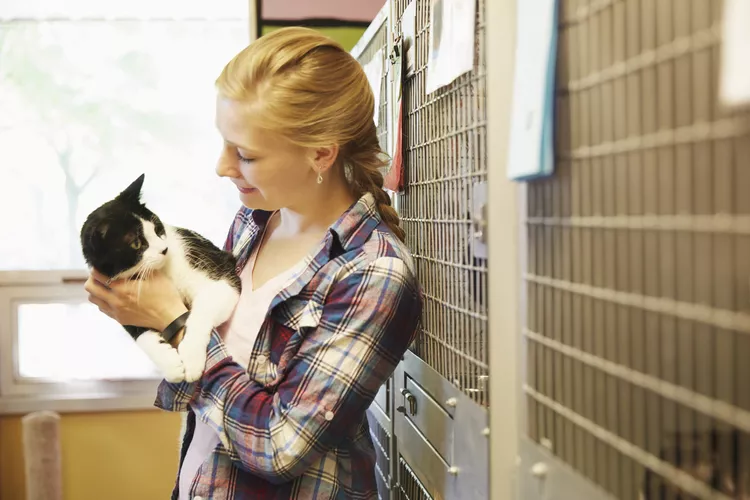What to Expect When You Bring Home a Shelter Cat

So you've decided to open your home to a shelter cat. Congratulations! You are helping to stem the cat overpopulation problem and have possibly saved the life of this cat.
It will be helpful to know what to expect when you bring him home. There will be a number of things to watch for, both physical and behavioral. The cat who seemed affectionate while in a cage may suddenly become shy, withdrawn, or even aggressive. Careful pre-planning will help avoid many inherent problems.
Your Shelter Cat May Have Medical Problems
Because of the crowded conditions of many animal shelters, it is almost inevitable that your newly adopted cat has been exposed to diseases and parasites. It is important that you have him vetted prior to bringing him into your home, especially if there are other cats in your house. The best plan is to set an appointment with your veterinarian for the day you will pick up your cat. Your veterinarian may ask you to bring a fecal sample, and will want to see whatever medical records the shelter can provide. If this is your first cat and you do not have a veterinarian, the shelter officials can probably make a recommendation. Here are a few of the things your vet will check for:
- Parasites
Fleas, ticks, and worms are common in crowded shelters. Ringworm, a zoonotic fungal infection, may also be found. If a fecal test discloses worms (most often roundworms or tapeworms), you will be given medication to rid the cat of worms. In the case of tapeworms, you will be given advice on treating fleas with a bath and/or a topical flea control product. - Test for Life-Threatening Diseases
Many shelter cats lived (or are born to mothers that lived) rough on the streets and may have been exposed to FIV (Feline Immunodeficiency Virus) or FeLV (Feline Leukemia Virus). You won't want to bring these diseases home to other cats, so testing for them is of high priority. Your veterinarian will recommend vaccines based on these test results and the environment that cat has been in. - Other Communicable Diseases
A large percentage of cats in shelters carry URIs (Upper Respiratory Infections). The most common are: Feline Calicivirus, Rhinotracheitis (Feline Herpes Virus), feline Chlamydia, and Bordetella. The symptoms include runny eyes, nasal congestion, sneezing, and an elevated temperature. Cats from shelters may have also been exposed to Feline Panleukopenia Virus (Feline Distemper), which is especially serious for young kittens. If your cat has contracted any of these conditions, your veterinarian will discuss treatment options. If your cat gets a clean bill of health, preventative care will be discussed including a plan for "core vaccines,"--vaccines that are recommended for all cats except the very old or very sick. - Physical Exam Findings
While checking for the aforementioned conditions, your veterinarian will perform a complete physical examination of your new cat, including palpating the abdomen, and checking for lumps and bumps.He will then give the indicated vaccinations. If the cat has not been neutered, a plan for surgery will be discussed.
Bringing Your Shelter Cat Home
Your new cat has had a rough day already, and will probably be stressed by the time you bring him home. He is most likely used to the closed environment of a shelter cage, so it would be best to keep him confined in a small safe room for the first few days, especially if there are other cats in the house.
Let your cat set the rules at first. Don't be surprised if the cat hides under the bed for several days. As long as there is easy access to food, water, a litter box, a place to sleep, and a toy or two, he will be okay. Chances are when you are not in the room, he will be coming out to eat, use the litter box, or explore.
Gradually increase your together time. Talk to your cat when you are in the safe room. You may want to sit in a chair and read a book. He'll come around when he finally feels safe with you, but don't rush it. Count your victories in small increments: the first time he peeks out at you from under the bed; the first time he plays with a wand toy with you; the first time he takes a treat you offer him. When he finally jumps up and settles in on your lap, you'll know that he is now your cat, and no longer a shelter cat.